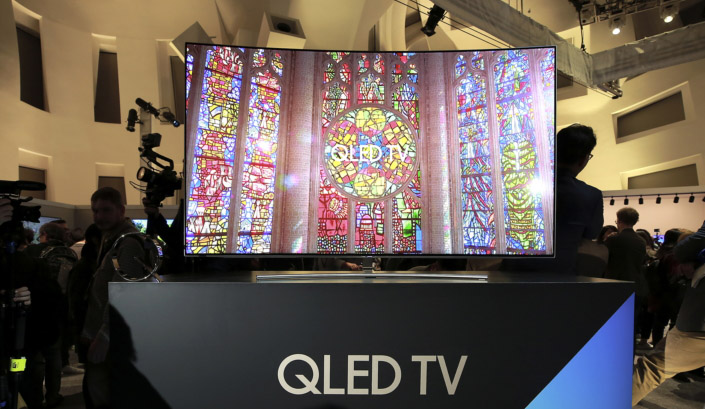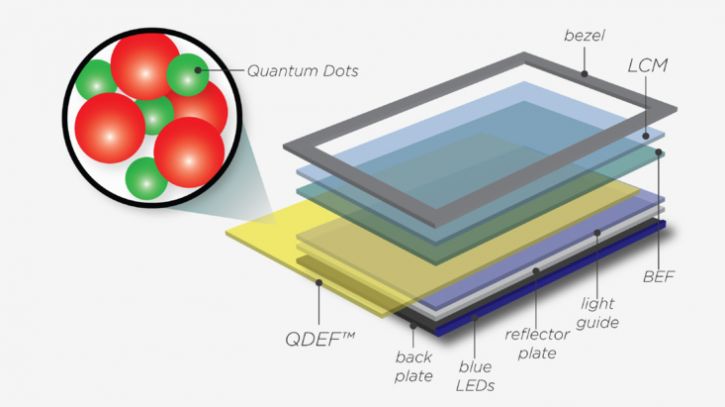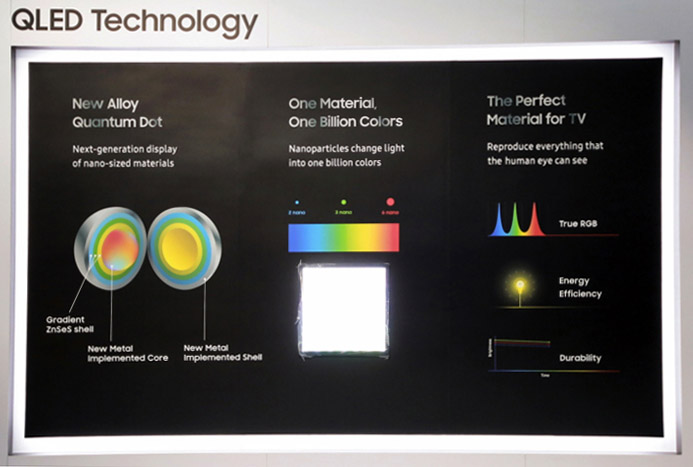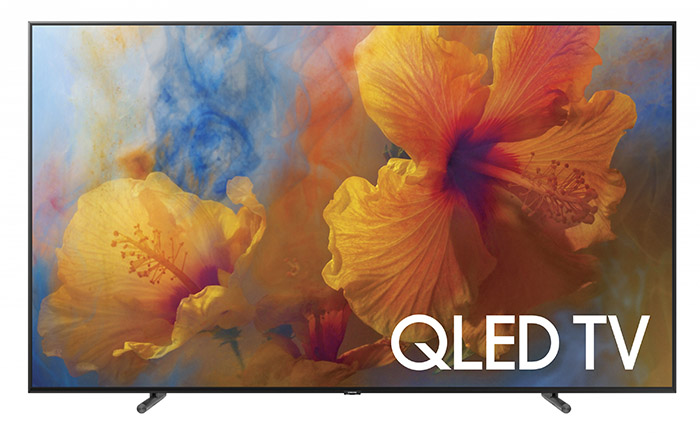Dear Big Picture Big Sound,
I've heard that Samsung launched a new type of 4K TV this year called QLED. Is it like OLED, or like regular LED TVs or is it something completely different?
-Tony in Talahassee
Hi, Tony,
Thanks for your question. Samsung's QLED (Quantum dot Light Emitting Diode) TV is actually not a new category of TV. It's the latest incarnation of an LCD (Liquid Crystal Display) TV, but with enhancements to its backlight. Like other LCD TVs, Samsung's QLED TVs use an LCD panel to create the pixels that make up the TV image. And, just like other LCD TVs, Samsung's QLED TVs require a light to shine through the LCD panel in order to create a visible on-screen image. It's in that backlight that things are a bit different on the QLED TVs.
LCD TV backlights can be any type of light, really, as long as it's white or close to it. In the early days of LCD TVs, the backlight was comprised of fluouresecent tubes which had a translucent light diffuser in front of them in order to create a uniform light source. More recently, manufacturers have been using LED (light emitting diode) lights as the backlight for LCD TVs. Use of LEDs as the backlight source for LCD TVs led to the misnomer "LED TVs" which Samsung and other manufacturers have used in order to highlight this difference in the backlight (though they were and are still LCD TVs).

With LED backlighting, LCD TVs are able to get brighter than they used to. LEDs have gotten so efficient that manufacturers have been able to use fewer and fewer LED lights in their LCD TVs and still reach very high peak brightness. By using fewer LED lights, the manufacturing cost of the TV gets lower, and LCD TVs can get thinner and lighter. In fact, many manufacturers now use a technique called "edge-lighting" to light up the whole screen with LED lights on one or more sides of the TV instead of having a whole array of LED lights behind the screen. In order to prevent uneven picture brightness, LCD TV makers use light guides and light diffusers to create a uniform backlight.
Unfortunately the side effect of using edge lighting is that you can end up with some lighting uniformity problems on the screen (uneven brightness), and you also lose the ability to reach true black on the screen without actually turning the backlight off completely. Even if you dim the backlight, there is still some light leakage through the LCD shutters which leads to black levels being dark grey instead of truly black. A technique called "Local Area Dimming" can be used to minimize this, by varying the intensity of the backlight in different areas of the screen. But this technique can only be used to its full effect when you have a full array of LED backlight elements. It can be used to some extent with edge lit LCD TVs, but with far less precision. Samsung's 2017 QLED TVs use edge lighting (not full array backlighting) which allows them to be super-thin, but it does sacrifice something in black level reproduction. The top of the line Q9 series QLED TVs use LED lights on both sides of the screen to create the backlight.
But to get back to what makes the QLED TV different, the trick in getting an LCD TV to reproduce color accurately is to come up with a pure white backlight. By "pure white" I mean the backlight has equal components of the primary colors: red, green and blue mixing to create that white light source. By having a pure white light source, the LCD panel's red, green and blue color filters can then be applied to the backlight in order to mix those primaries into all the colors of the rainbow. Samsung's QLED TVs use a technology called "Quantum Dots" which are microscopic particles that have very specific optical filtering capabilities which make them extremely accurate at reproducing the primary colors. So by combining a pure blue LED backlight with a red and green quantum dot light diffuser panel, you get a pure white backlight. Then when you apply color filters to this white backlight, you can get a wider color spectrum than you get with traditional LED or fluorescent backlights.

But Samsung isn't the only manufacturer to use quantum dots. In fact, this isn't even the first time that Samsung has used them in its Ultra HD TVs. Quantum dots have been used to enhance color reproduction in select LCD TVs from several manufacturers since 2013. So why did Samsung coin a new term this year? Why are Samsung's QLED TVs better or different from those that came before them? The cynic in me would say, "It's just marketing." But the fact is that Samsung has made some significant improvements this year in its quantum dot technology. The company even acquired one of the leaders in the space, QD Vision late last year, in order to accelerate their development.
Samsung's "new and improved" quantum dots are more spherical in shape (for more uniform light diffusion) and use a metallic shell and core that enhance both color accuracy and transmissiveness. In other words, they let more light through and they create an even more pure light source. With these enhanced quantum dots, Samsung's latest LCD TVs, sorry "QLED TVs" can reproduce nearly 100% of the P3 digital cinema standard color spectrum. And with future refinements, Samsung Quantum Dot-enhanced TVs may even be able to reproduce the elusive REC 2020 color standard, which is pretty close to the measured limits of human perception.

Other notable improvements with Samsung's QLED TVs include enhanced brightness (Samsung claims up to 2000 nits of peak luminance) and a marked improvement in off-axis viewing - the Achilles heel of LCD TVs. On most LCD TVs, as soon as you move away from the sweet spot, which is diirectly in front of the TV, the picture gets noticeably dimmer and the colors fade. With Samsung's QLED TVs - particularly the flagship Q9 models - you can actually move around the room a bit and still get a bright and color-accurate image. It's not quite up to the standards of a plasma or OLED TV in this respect (those technologies use self-emissive pixels and so don't have signficant off-axis viewing issues), but it is a significant improvement over last year's models.

So is QLED a new category of TVs? That's debatable. It's still an LCD TV with and LED backlight. But the improvements the company has made to LCD TV picture performance thanks to enhanced quantum dots are significant and worth calling out, by any name.
Related Stories: